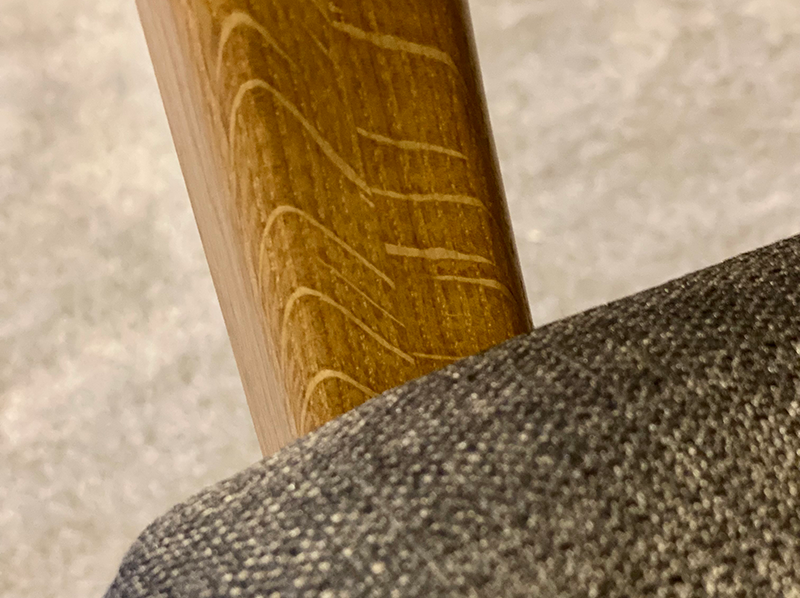Imperfection as a way of life.
The armchair finally arrived. It looked appropriate in the living room. It was crisp, polished and neat and had that mid-century, nordic combination that conveys space, simplicity and perfection. I sat on it and ran my hand down the smooth American oak armrest. “Nice”, I said to myself. But as I looked closer, I noticed something that looked out of place. It looked like the furniture had been damaged. On the side of the armrest I saw what looked like long scratches lining the wood. An imperfection. Damage. I groaned and started thinking about what would be a long process of taking the armchair back and getting a new one. However, the more I studied the marks, the more I wondered if it was simply the nature of the wood which had formed longitudinal lines on the surface of the oak. Were they scratches or part of the actual wood – the natural marking and design of the material? It now didn’t look as polished and clean as I had initially seen it but there was something beautiful emerging the more I scrutinised the wood. I intuitively started to think about the “memories” this oak contained. It had existed in a forrest. It had weathered storms, wind and heat, and cool and hot weather. The elements had shaped it and now it was in my living room looking imperfect and worn, yet interesting and meaningful.
It’s been hectic lately. We have moved house. Moving house is stressful. But we were not just moving – we were and are making a home. This takes time and patience and for us it also has meant engaging in that dreaded yet rewarding process – renovating. And it is through this dreaded but rewarding process that we discovered that our little unit is, well, quirky. Many things don’t quite sit right. When we asked someone to help us with our wardrobe, he measured the space and found that the lines, windows and frames were a bit off, not quite right, left of centre. Often we heard “interesting” from the mouths of tradespeople after they measured the structures in our unit.
What this meant was that every time we attempted to change something – to renovate – we had to work with the glitches, imperfections and quirks of the building. This was frustrating and time-consuming. It was like trying to bend something perennially crooked back into perfect shape. And this, we realised, was a bad strategy. So we gave up and tried a more intuitive process. We decided to work with the quirks. Once we did that we had a revelation. The more we let go, the more we connected to this new place, bonded with it and even grew an affection for the quirks. We wondered how those imperfections and quirks happened. Was it simply bad workmanship? Or was it the weather that had made the wooden windows stretch, bend, groan and stick together like they did? Was the foundation slightly shaky because our suburb is built on sand? Why was it built on sand anyway?
The Japanese term wabi-sabi is a beautiful and honest way of thinking about aesthetics in relation to everyday living. Life is imperfect and transient. Life is about appreciating the beauty in imperfection and incompletion. Life is found in the scratches, quirks, the left-of centre – and those imperfections. That’s where we find meaning and memory, and it’s where we find our humanity. So I’m happy with my quirky unit and scratched-looking oak armchair; it moves me to wonder, compassion and connection. It makes me think how fleeting life is. It’s not instinctive to live this way in a society that values perfection, immortality and completion (see botox, implants et al.). But now I wonder if, ultimately, it’s those quirks, scratches and imperfections that make us a more interesting and meaningful society – and a humane one.
Karina Kreminski is the founder of Neighbourhood Matters with her husband Armen Gakavian and blogs at This Wild and Precious Life where you can find this article.














